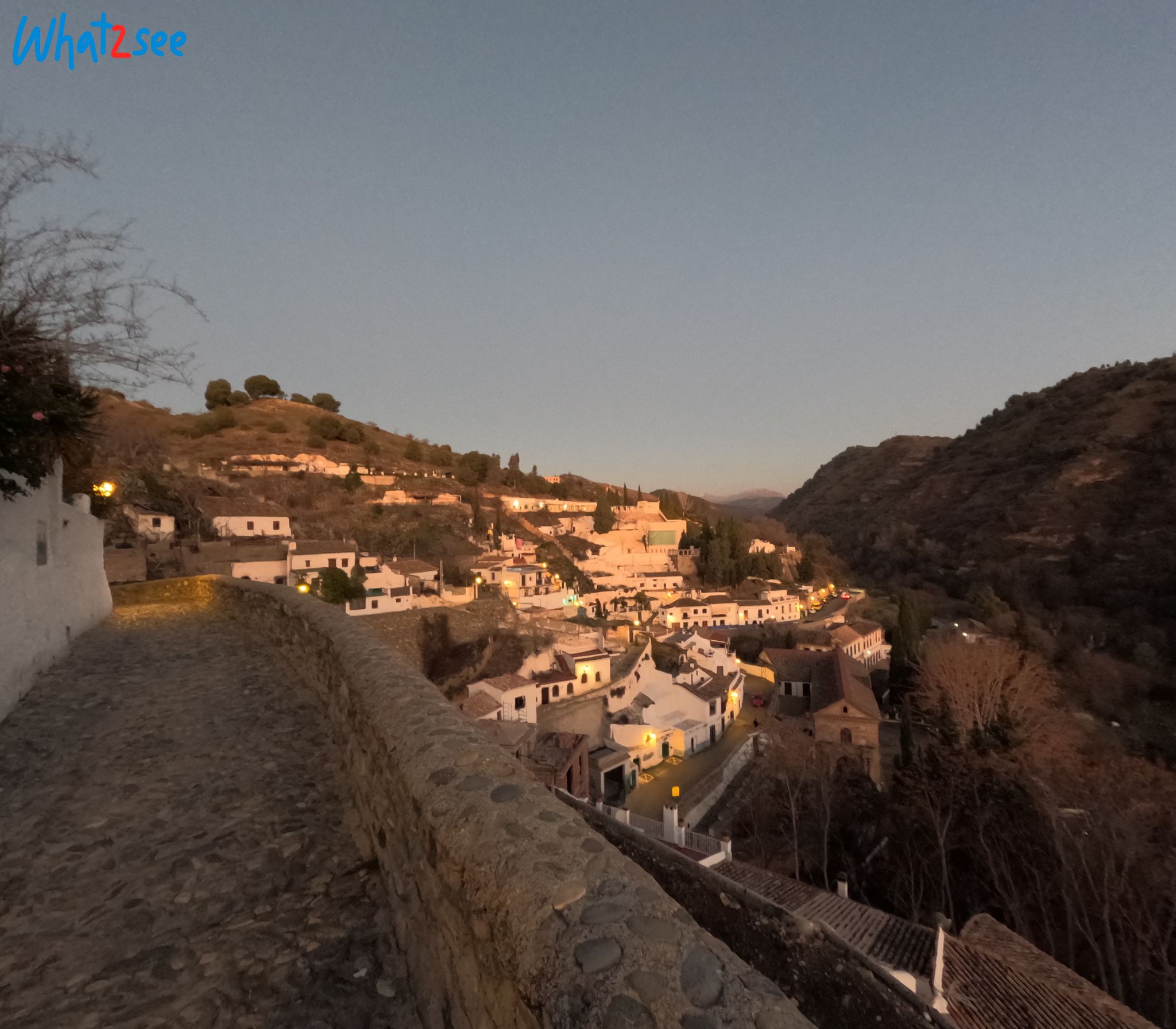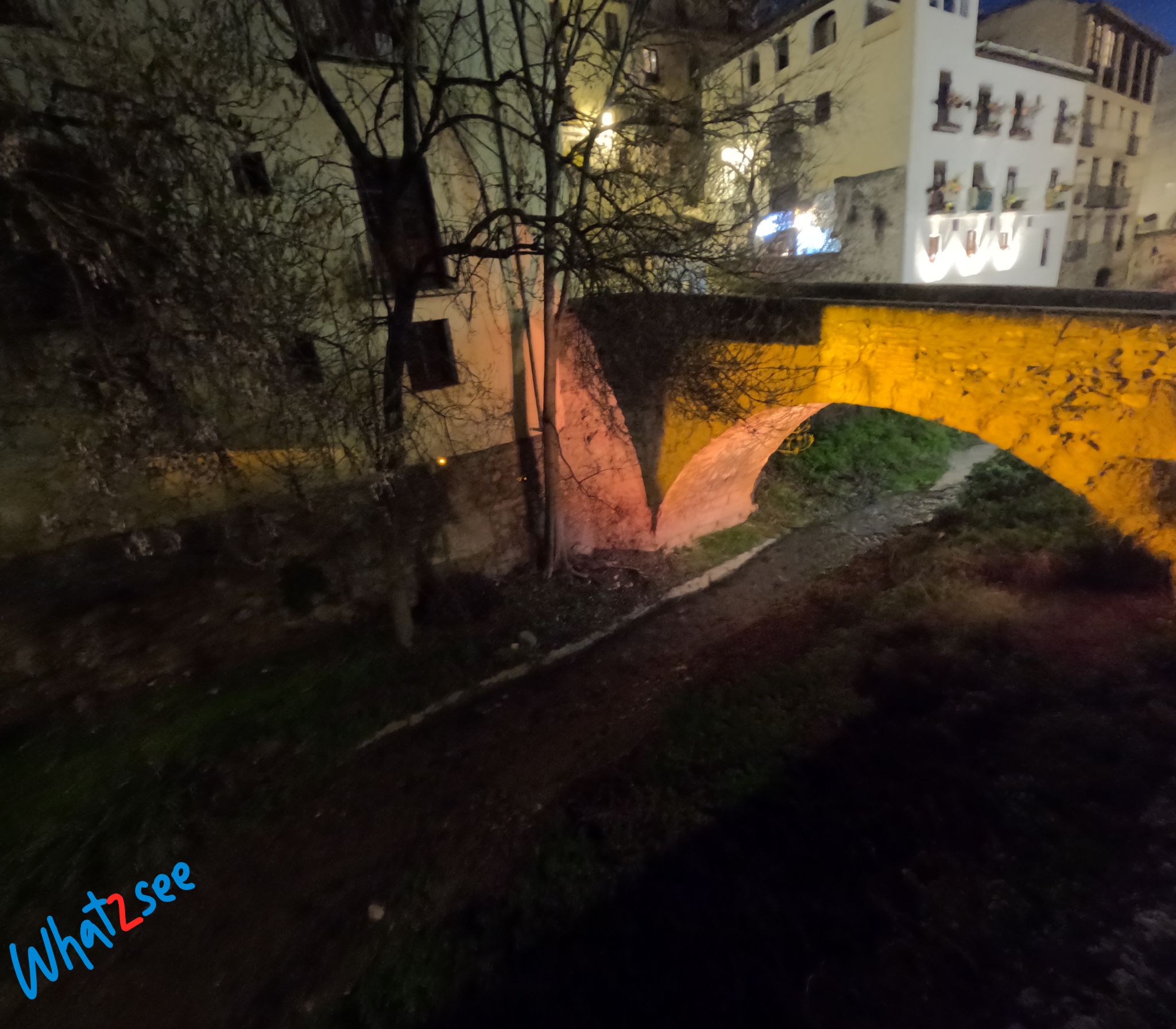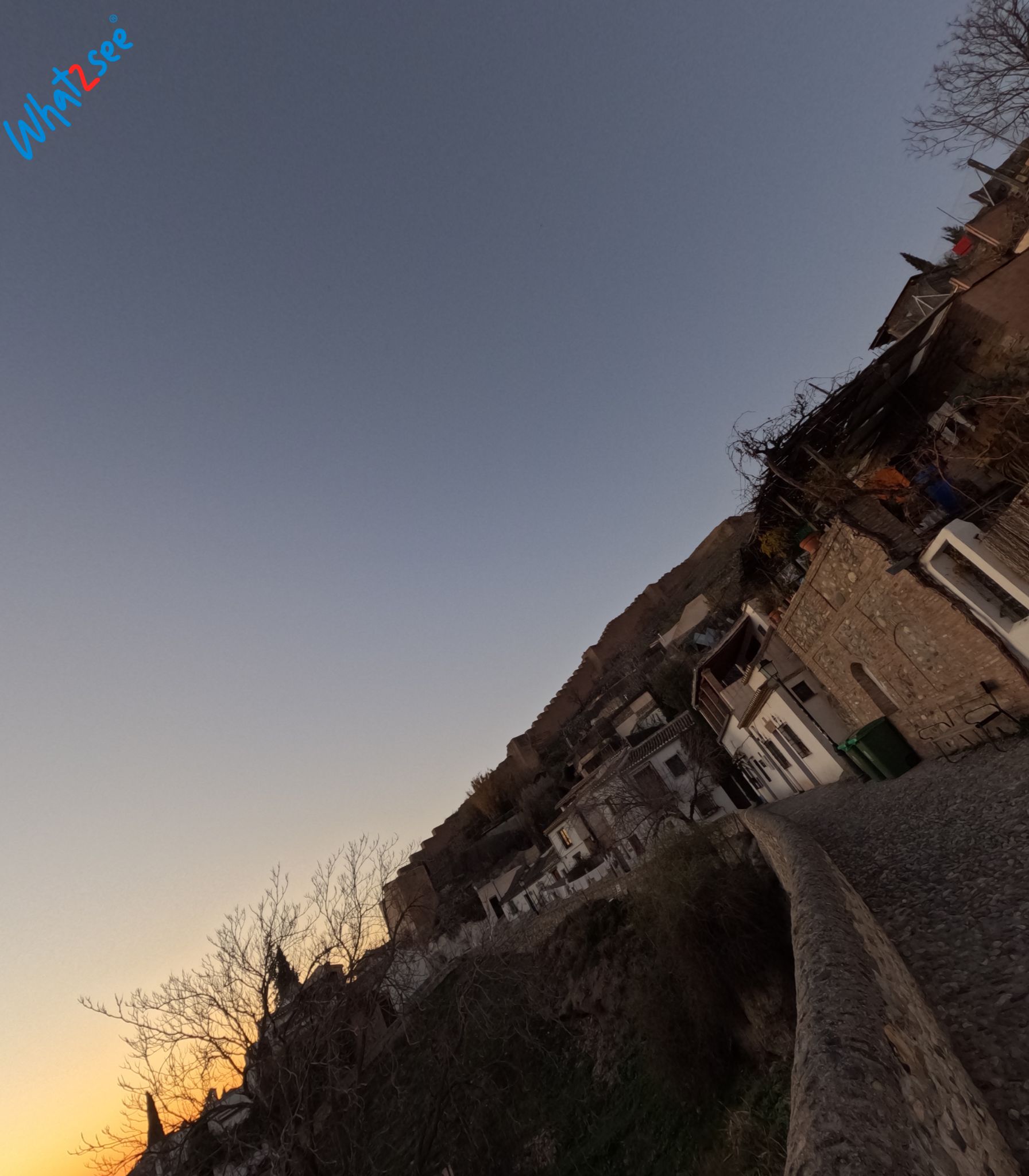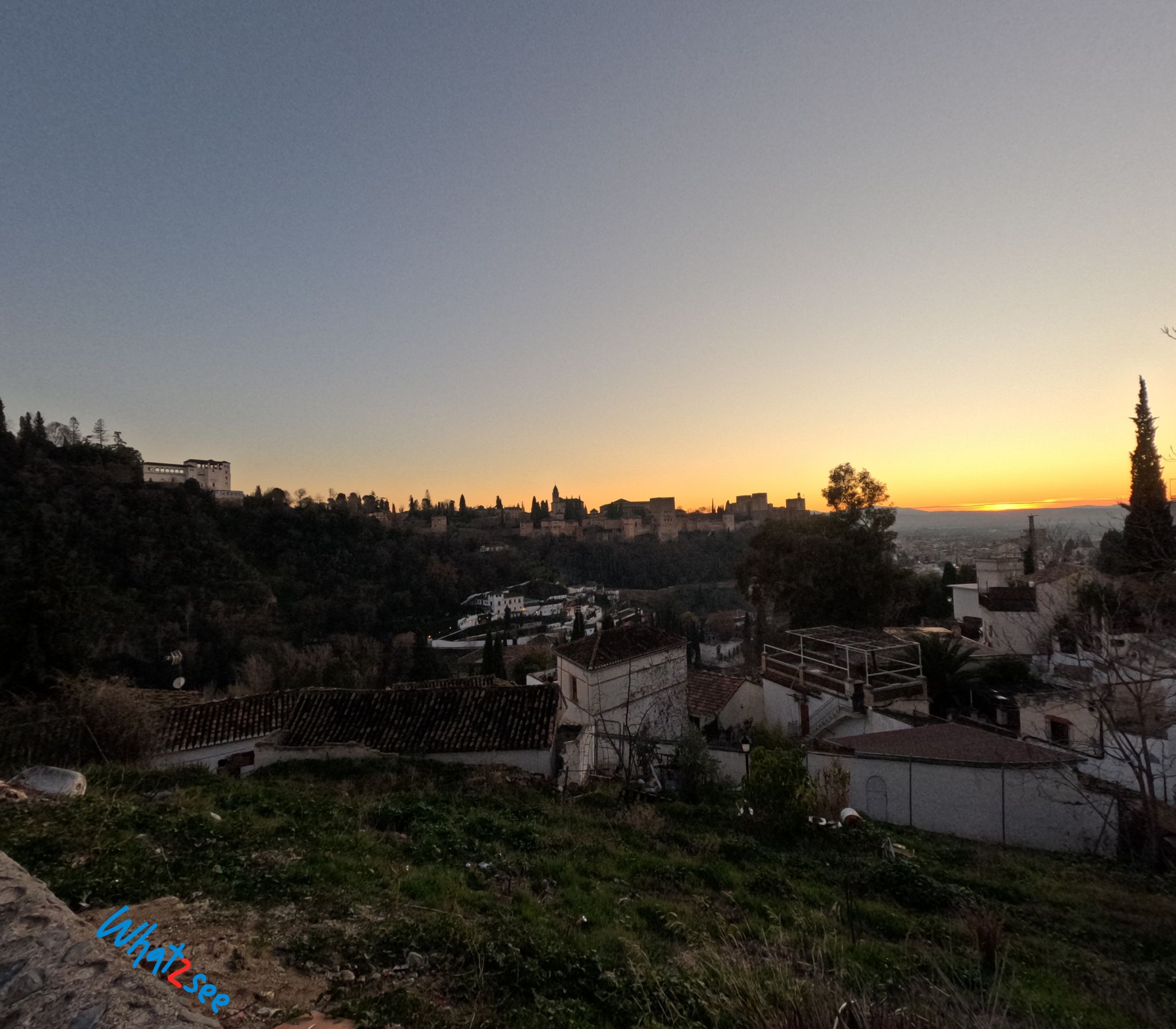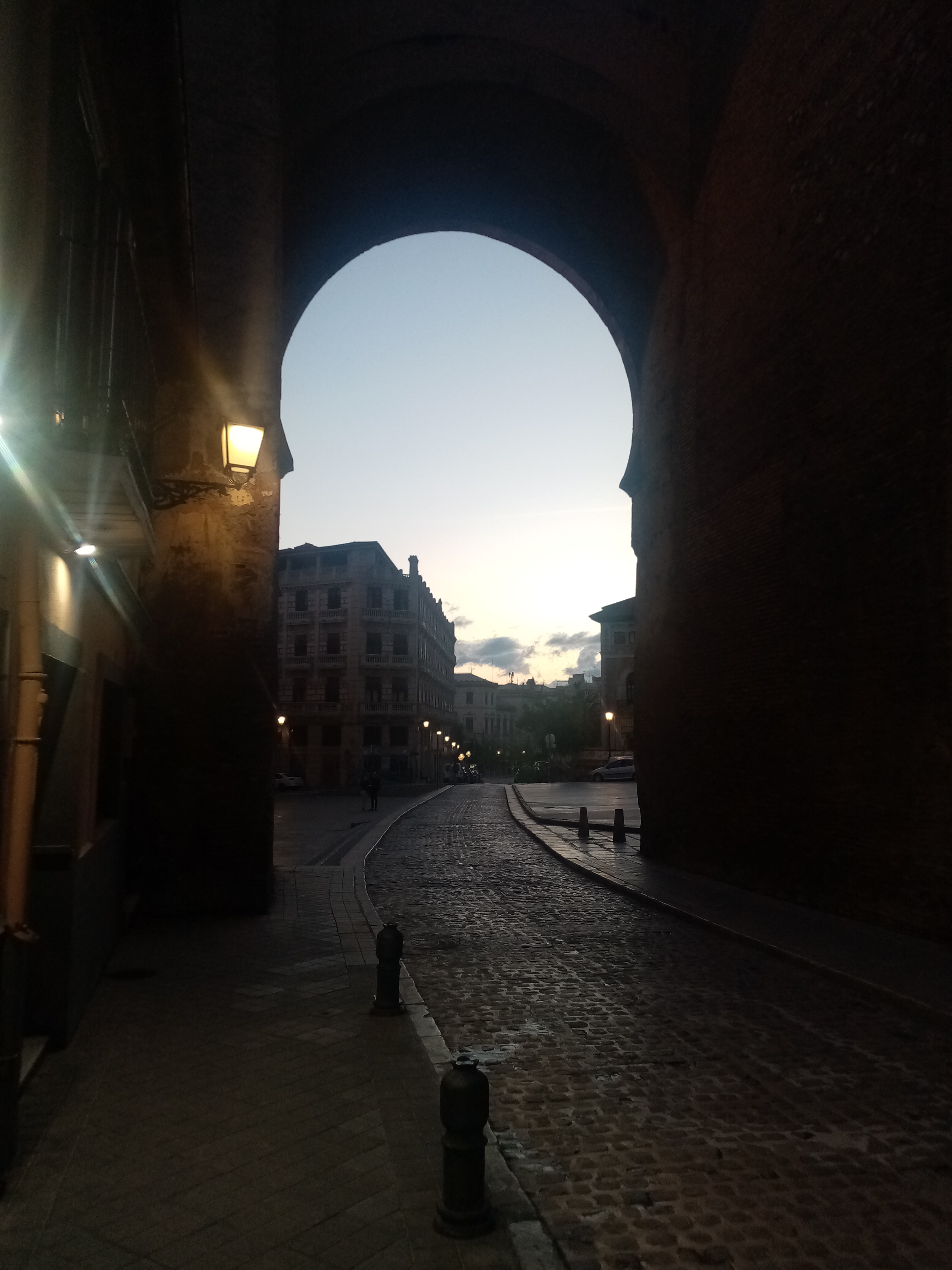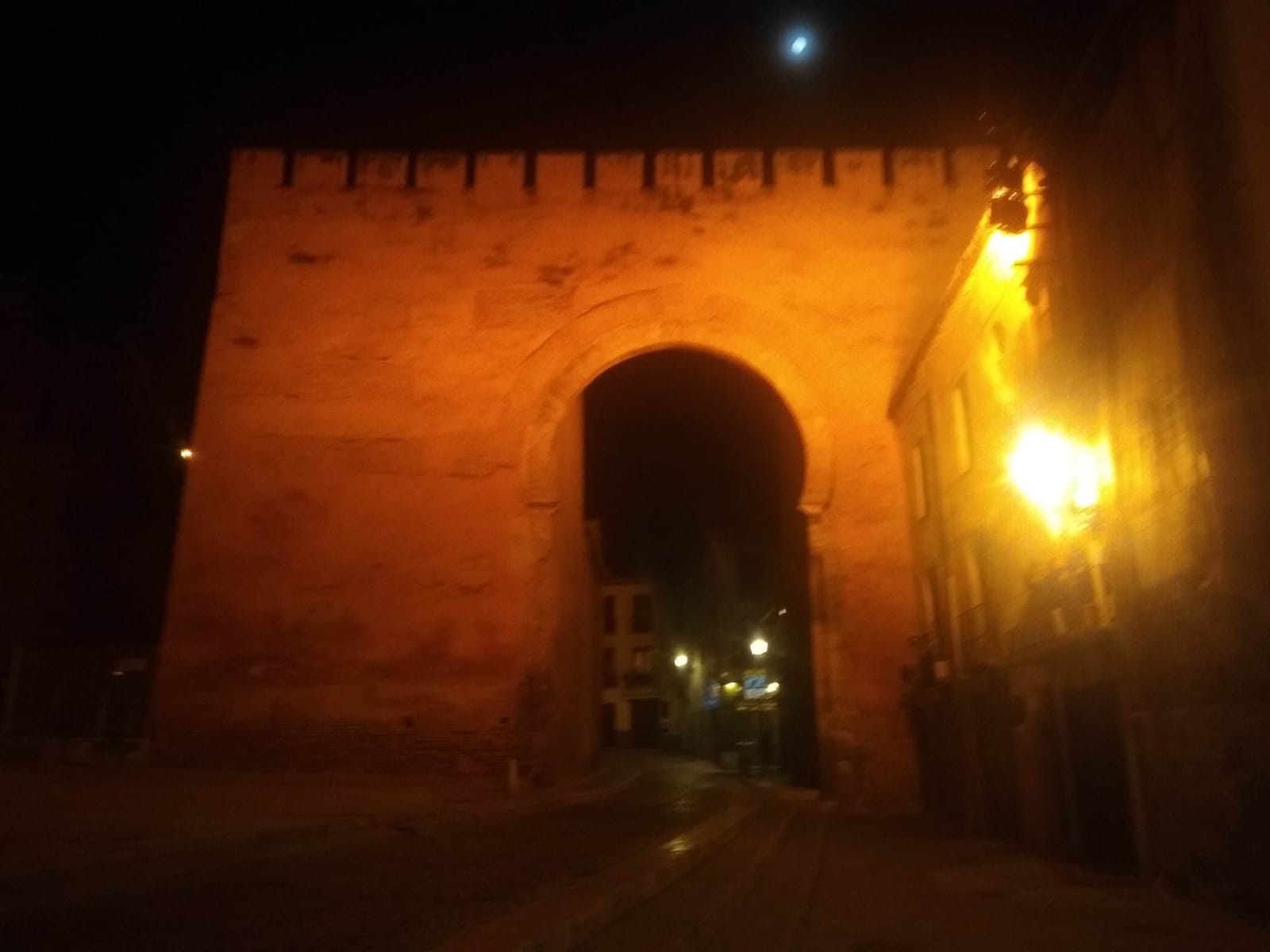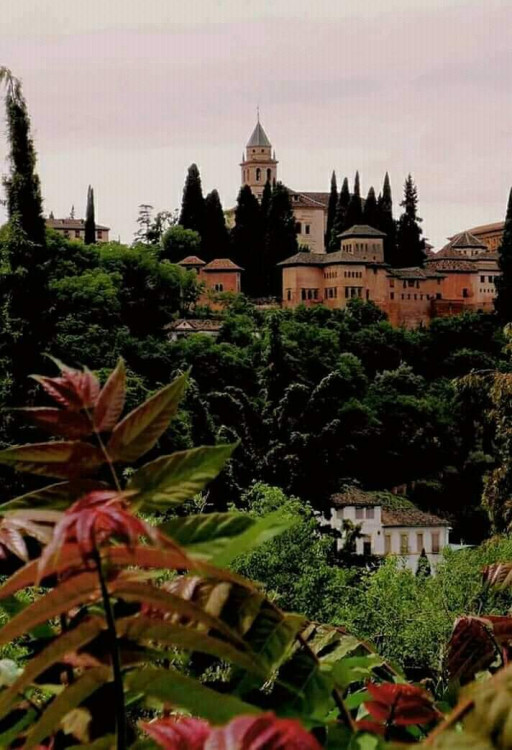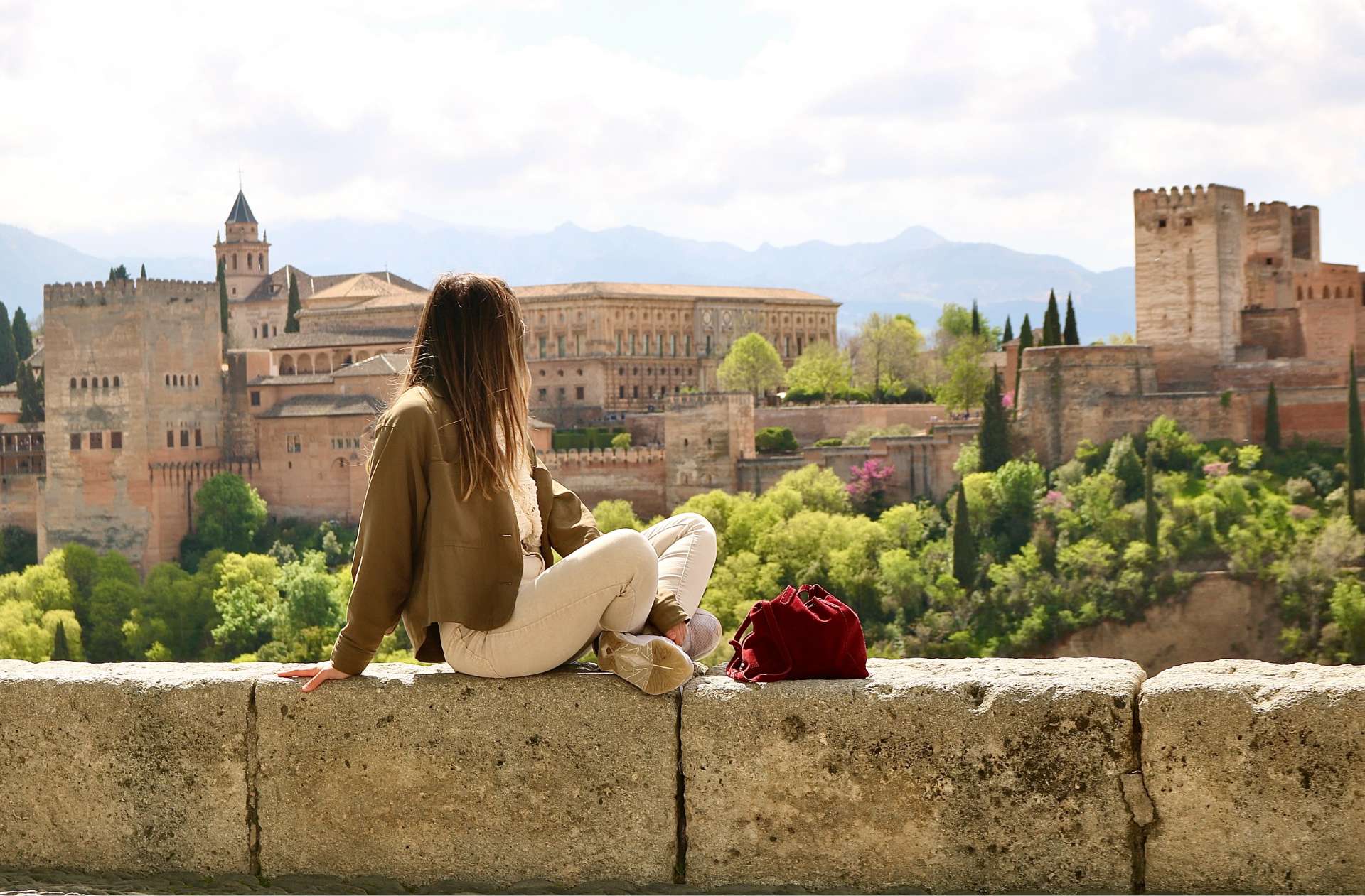Granada After Sunset: Where the City Comes to Life
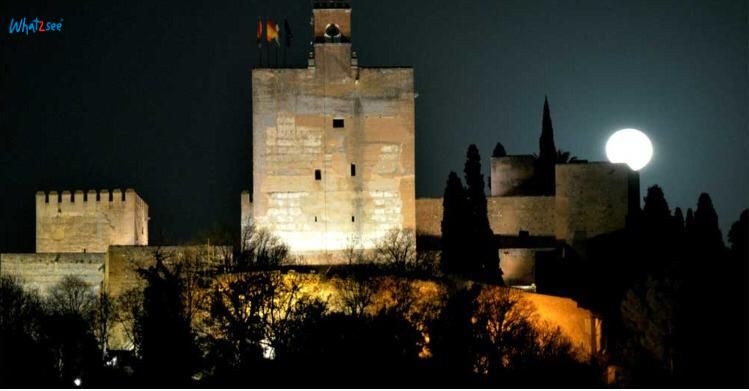
Discover Granada by Night, Beyond the Crowds
The Illuminated Alhambra, Hidden Viewpoints, and Authentic Experiences with a Local Guide especialized
When the sun sets behind the Sierra Nevada, Granada reveals its most intimate soul.
The lights of day slowly fade, and another show begins—subtler, deeper. The golden stones of the Alhambra, now bathed in soft artificial light, turn into liquid gold cascading down the hillside. The Albaicín, with its maze of cobbled alleys, whispers ancient secrets to those who dare to lose themselves in its shadows. And Sacromonte—that rebellious, gypsy, eternal neighborhood—beats with the rhythm of a flamenco heart, marking invisible compás only heard after dark.
This is nocturnal Granada, the one few tourists ever truly know: a city that doesn’t sleep but instead awakens with quiet elegance, wrapped in jasmine scent, dim lights, and silences thick with history.
There are no lines here, no rush, no crowds. Only raw beauty—the murmur of fountains, soft conversations in shaded squares, the clink of a wine glass, a distant guitar...
Because at night, Granada stops being a postcard and becomes a confidante. It's not just a city to visit—it’s a place to live, to feel. And if you let go—if you walk without a map and open your senses—you might discover what so many travelers have taken with them forever, without ever being able to explain it: that mysterious something that only reveals itself by moonlight.
The Illuminated Alhambra: A Palace Suspended in Time
Visiting the Nasrid Palaces at night isn't just seeing the Alhambra in another light. It’s an entirely different experience—one that feels more intimate, almost secret. When the day’s echoes fade and silence settles over the hill, a sensory journey begins that completely transforms the place.
Darkness doesn’t hide it—it enhances it.
Delicate lighting reveals arches, columns, and lattices as dreamlike silhouettes. The Arabic inscriptions—so often overlooked in daylight—seem to whisper poetry in the ears of curious visitors. Tiled walls reflect like mirrors in the still pools of the Court of the Myrtles. And silence, deep and solemn, wraps the palace in a near-sacred atmosphere.
These night visits are exclusive: the route is limited to the Nasrid Palaces only. But far from a drawback, this gives the experience a ceremonial quality. No rush. No distractions. Just you, the night, and the architectural dreams of ancient sultans.
The Court of the Lions, lit by a soft glow filtered through the arches, appears to float. Its marble columns, often lost amid daytime crowds, seem to come alive. The Hall of the Ambassadors—once the political heart of the Alhambra—shows its carved wooden domes and starry ceilings with clarity only darkness can provide. The Mexuar, intimate and spiritual, offers the perfect epilogue to a night that feels more like a revelation than a visit.
Only in the half-light—when the walls seem to breathe and water whispers age-old secrets—do you begin to understand why this place captivated sultans, inspired poets, and left emperors speechless.
The Alhambra by night isn’t just something you see. It’s something you hear, feel, and carry with you forever.
Uncover the magic of the Alhambra after dark on our exclusive night tour
The Albaicín by Night: Secret Viewpoints Beyond the Crowds
Granada has many faces, but few are as seductive as the Albaicín after dark. While San Nicolás Viewpoint bustles with tourists chasing the perfect sunset photo, quieter and more magical corners await those who dare to wander deeper into its labyrinth of stone alleys.
Because the Albaicín isn’t just a neighborhood—it’s a sensory experience.
And at night, beneath the old streetlamps and the golden glow of the illuminated Alhambra, it becomes almost surreal. Every bend holds a story. Every turn can lead to a hidden viewpoint where silence is your only companion.
Take the tiny Placeta de Carvajales—a peaceful oasis. From its stone bench, surrounded by orange trees and the gentle murmur of a fountain, you can watch the Alhambra reflected in the stillness of night. Higher up, near the Church of El Salvador, old Moorish paths open onto unexpected views: spontaneous viewpoints, whitewashed walls framing the fortress like a living painting.
And if you keep walking—because in the Albaicín, the best is always just a little farther—the paths toward Sacromonte will reward you with unforgettable scenes: the Alhambra peeking through cypress trees, the whisper of the Darro river below, the scent of jasmine floating from ancient garden homes.
The cármenes—private villas with gardens that are the soul of the Albaicín—hold their own nocturnal magic. Through wrought-iron gates or hidden terraces, you glimpse hushed conversations, soft lights, and a sense that time here chose to pause centuries ago. Fountains, lemon trees, moonlit white walls… Everything evokes the spirit of an old Andalusi village—asleep but alive, distant yet close.
To walk the Albaicín by night isn’t sightseeing. It’s taking part in an intimate ritual between history, landscape, and feeling. It’s letting yourself drift, without map or haste. It’s seeing the Alhambra not as a monument, but as a presence—watching over the city from its stone throne.
It is, above all, discovering a Granada that only reveals itself to those who know how to look in silence.
Sacromonte: Where Flamenco’s Soul Comes Alive
But Sacromonte by night is not only flamenco.
It’s also a natural balcony over the sleeping city. From the Vereda de Enmedio, one of its quietest and least-visited lookouts, Granada unfolds like a carpet of twinkling lights. The Alhambra, aglow with celestial radiance, seems to hover above the hill.
And while the city rests below, in some cave above, a guitar still plays, a voice sings of ancient sorrows, and a dancer writes poetry with her feet.
Because here, in this neighborhood of caves and stars, flamenco isn’t a memory—it lives every night with a passion that can’t be told, only felt.
To sit in one of these caves, surrounded by breathless silence, and watch a dancer ignite the night with her body and gaze, is to witness something unrepeatable. There is no script. No pretense. Just truth. A truth that moves you, shakes you, and takes your breath away.
At night, Sacromonte has duende—that mysterious, emotional power that can’t be explained, only felt. The zambras—traditional flamenco gatherings—aren’t staged shows for tourists; they are rituals. Inside whitewashed caves, with their low ceilings and organic curves, the guitar strums as if from the earth’s core. The singing is raw, ancient. And the dancer’s heels—firm, wild, rhythmic—echo like ancestral heartbeats.
When night falls in Granada, something magical awakens in Sacromonte. This ancient gypsy quarter, clinging to the hillside opposite the Alhambra, shakes off the dust of the day and starts to pulse with its own rhythm.
The caves, which by daylight may seem like curious geological quirks, come alive. They become sacred spaces where flamenco isn’t performed—it’s lived, suffered, and celebrated.
Sacromonte by night isn’t just a place—it’s an experience.
It’s the most authentic, visceral, and profound face of Granada. A Granada that you don’t simply visit—you live. And once lived, you never forget it.
The Carrera del Darro and Paseo de los Tristes: Romantic Granada
Granada has corners that feel like they’ve stepped out of a legend. But if there’s one spot where the city becomes pure nocturnal magic, it’s the walk along the Carrera del Darro and the Paseo de los Tristes. Beautiful by day, but by night… simply unforgettable.
At the foot of the Alhambra, beneath the cypress trees of the Sabika hill, the Darro River winds past stone bridges, Moorish houses, and century-old lampposts. The water murmurs, the cobblestones creak beneath your steps, and the city seems to whisper to your ear.
Walking here after sunset is like gliding through the pages of a love story written in Arabic and Spanish.
Dim lights paint golden reflections on the river, while the Alhambra’s illuminated walls float theatrically above. It’s a setting that has it all—mystery, history, beauty, and a near-unreal serenity. Nothing seems to have changed in centuries.
The Bañuelo—one of Al-Andalus’ best-preserved Arab baths—hides quietly among the façades. Nearby, Renaissance palaces and houses perched over the Darro give the scene a medieval fairytale air. Every balcony, every arch, every glimpse of a courtyard behind an iron grate offers a postcard of nostalgia.
Despite its melancholic name, the Paseo de los Tristes is a place where Granada reveals itself in all its glory. By day it’s lively and lined with terraces, but at night it recovers its original soul—quiet, romantic, almost enchanted.
Sit on a bench here, with the Alhambra looming above and the river at your feet, and you’ll live a moment that’s hard to match.
Follow the path further, and it naturally leads you into the Realejo—the old Jewish quarter. Its steep, narrow streets, winding between whitewashed houses, invite you to get lost. Hidden lookouts like the Placeta de los Campos reward you with unexpected views: Mudejar towers, Baroque domes, and always, the Alhambra keeping watch from above.
This night stroll is more than a walk through Granada’s historic heart.
It’s an intimate, sensory experience.
It’s the city at its most poetic, where every step, every shadow, and every corner seem made for memory.
Experience Granada by night with a local guide who knows all its secrets
The Historic Center: Cathedrals and Illuminated Plazas
As the sun fades and long shadows stretch across ancient walls, the heart of Granada transforms. Daytime bustle gives way to calm, glowing with elegant serenity. It’s in this hour that the historic center—its plazas, temples, and alleyways—reveals a quieter, more authentic beauty.
The Cathedral of Granada, with its grand Renaissance façade, becomes even more majestic in the warm light of evening. Beside it, the Royal Chapel—resting place of the Catholic Monarchs—emits a reverent hush, as if time itself paused to honor history. These Christian landmarks, standing in a city that still breathes its Andalusi soul, create a unique harmony only Granada could achieve.
Stroll through Bib-Rambla Square by night and you’ll find a place of calm delight. Under softly lit trees, beside murmuring fountains, and terraces scented with jasmine and Andalusian cuisine, locals and travelers meet without haste.
A few steps away, Plaza Nueva pulses with a different energy: livelier, more nocturnal. Among old palaces and noble houses, you feel the heartbeat of a city that never quite goes to sleep.
If you wish to dive deeper into Granada’s Moorish memory, detour briefly to the Alcaicería. Though the shops of this old silk market close at nightfall, its narrow alleys retain the atmosphere of an oriental bazaar.
The echo of footsteps on stone, the lingering scent of incense, and the perfect geometry of Andalusi arches transport you to a time when this was the commercial heart of a kingdom.
At night, without the chatter of shoppers or the shuffle of stalls, the Alcaicería feels reborn: more poetic, more mysterious. As if it still guards the secrets of silk merchants and spice traders from centuries past.
Walking through Granada’s historic center at nightfall is a blend of the monumental and the everyday, the sacred and the secular, the timeless and the fleeting.
It’s seeing the city glow not just with light, but with memory—one step at a time, under lamplight and the gentle whispers of its plazas.
Practical Guide to Experiencing Granada by Night
Best time for night visits:
Spring and summer are the ideal seasons for nighttime visits. Temperatures are mild and perfect for evening strolls, terraces come alive, and monuments extend their opening hours. This is when Granada turns into an open-air stage.
If you're thinking of visiting the Alhambra by night, keep in mind that these tours are officially organized from Tuesday to Saturday, with schedules varying by season. In spring and summer, they usually start later, allowing you to enjoy the twilight from the Nasrid Palaces. It's advisable to book in advance, as places are limited and in high demand.
Getting around:
Much of the charm of nighttime Granada lies in its historic neighborhoods, especially the Albaicín and Sacromonte. But there's something you should know: these districts are pedestrian-only, cobbled, and full of slopes and steps. The golden tip? Wear comfortable shoes and be ready to walk… and enjoy it.
Getting lost on foot in these streets is part of the journey. Every corner holds a surprise: a hidden viewpoint, a tucked-away fountain, a street musician turning a corner into a tiny stage.
That said, if you prefer to combine walking with public transport, minibuses C31 and C32 connect the city center with the Albaicín and Sacromonte. They’re small, agile, and perfect for reaching the top effortlessly—and then walking downhill, letting the magic of the surroundings guide you.
Safety:
Granada is a very safe and welcoming city, even at night. You'll see both tourists and locals enjoying its squares, terraces, and promenades well into the early hours. Still, like in any city, it's wise to use common sense: stick to well-lit streets, avoid wandering alone into deep, deserted alleys of the Albaicín, and keep an eye on your belongings, especially in busy areas.
A useful tip: The streets may feel like a labyrinth—and they are—but getting lost is part of the fun… as long as you know your way back… or even easier, let What2see Granada guide you and keep you on track.
Why Choose an Authentic Local Experience
Granada is a city that transforms with the light of day, but it’s at night when it reveals its most intimate secrets. Discovering it in that magical moment can become an unforgettable experience… or just another one. The key lies in how you experience it—and above all, with whom you explore it.
While many visitors follow generic routes marked by brochures or big tour operators, there's another way to discover the city: more personal, more flexible, more real. With the best local guide showing you Granada as they live it.
Because it’s not the same to look at the Alhambra from the crowded San Nicolás viewpoint, surrounded by a hundred phone cameras, as it is to admire it from a hidden square where the only sound is the trickle of a Moorish fountain. It’s not the same to walk along the Carrera del Darro unaware of what lies beneath your feet, as it is to do so with someone who tells you Nasrid tales and love legends between centuries-old walls.
The difference is in the details… and the silences
A local guide doesn’t take you where everyone else goes. They take you where locals go: to secret viewpoints among Albaicín cypresses, to alleys with forgotten names, to patios that aren’t on Instagram but leave you breathless.
They also know something no map can tell you: the exact moments when the city changes its skin. They know when the last twilight fades over Sacromonte, or the precise hour when the Darro falls completely silent to hear the voice of a flamenco singer rehearsing behind closed doors.
Adaptability and connection: two keys for the curious traveler
The great advantage of a local guide is flexibility. There’s no fixed script or tight schedule. The route adapts to the weather, the group, the moment’s energy. Is it raining? The walk is adjusted to covered passages or historic cafés. Is it hot? The climb to the Albaicín is delayed until the cooler hours. Are you more interested in the history of flamenco than architecture? The route is recalibrated with no problem.
What’s more, local guides are often aware of cultural events that can enrich your experience: a concert in a hidden church, a spontaneous zambra flamenca, a one-night-only art exhibit. These details make the difference between visiting Granada and experiencing it.
Travel with soul, connect with the place
Beyond facts and dates, a local guide shares something essential: the soul of the city. And that only comes from passion, deep knowledge, and a genuine desire to share it.
Choosing an authentic local experience is also a way to support Granada’s living culture and economy, promoting a more sustainable, less crowded, and more respectful kind of tourism.
Because Granada needs no filters or special effects. Just a little silence, a few great stories… and someone who knows how to take you to the right place, at the right time.
Book your authentic night experience with expert guides
Granada Wakes Up When the Day Ends
When the sun hides behind Sierra Nevada and the lights begin to flicker timidly across the hills, Granada doesn’t go to sleep—it reinvents itself. What might seem like a tourist postcard by day comes alive at night with a more authentic, more intimate soul. That’s when the city reveals its true essence, the one that doesn’t show up in quick guides or rushed tours.
This is the Granada of the locals, the one that beats in silent alleyways, that holds centuries of history in every stone, that smells of jasmine and sounds like a guitar. It’s the city of living traditions, of stirring zambras, of viewpoints where the only thing you hear is the wind and the low voice of an old legend.
From the serene majesty of the illuminated Alhambra, floating like a mirage above the Darro, to the untamed spirit of Sacromonte that sparks with clapping hands and stomping feet in a whitewashed cave—every nighttime corner has a story to tell. And every story deserves to be heard in the right place, at the right moment.
Because discovering nighttime Granada is not just about seeing—it’s about feeling, connecting, living. And the difference between wandering alone or being guided by someone who truly knows it is immense.
Here, every step can be a discovery. Every shadow, a portal to another time. Every silence, a piece of history whispering from the past.
Ready to discover the Granada few get to know? The Granada night awaits you with its best-kept secrets. It’s not an ending—it’s a beginning.
And its most precious secrets… are whispered in your ear—only if you know how to listen.

